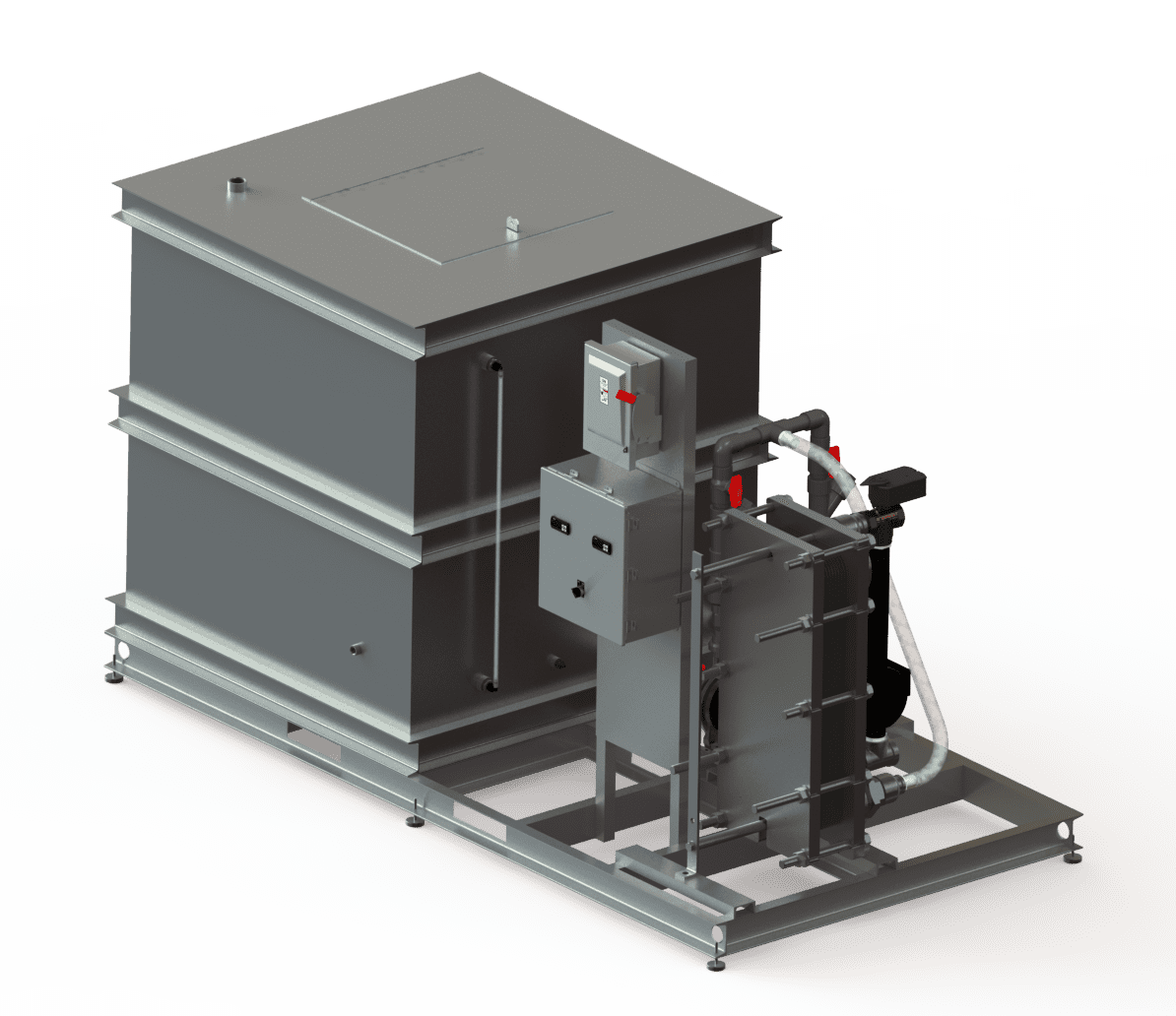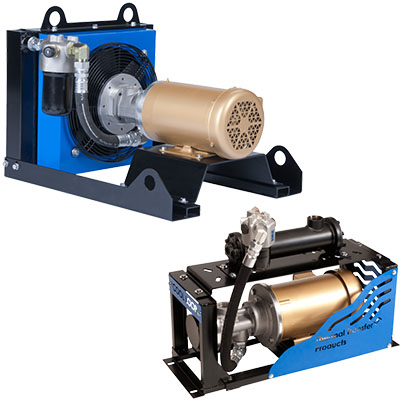Are DVS Heat Transfer Systems Built for High-Performance Electronics Cooling?
Wiki Article
Technologies in Heat Transfer Equipments: What You Required to Know for Ideal Performance
Innovations in Heat transfer systems are changing performance throughout numerous markets. Advanced products like graphene and nanofluids assure considerable renovations in thermal conductivity. At the same time, the combination of IoT and machine learning uses opportunities for real-time monitoring and improved power performance. Nonetheless, the landscape of thermal administration is quickly progressing (DVS Heat Transfer Systems). Comprehending these developments is crucial for achieving perfect system efficiency and sustainability in the future. What particular innovations are shaping this makeover?Emerging Products for Boosted Heat Transfer

Advanced Heat Exchanger Designs
While traditional Heat exchangers have offered their purpose in different applications, advanced layouts are now arising to satisfy the increasing demands for efficiency and performance. These ingenious designs, such as plate, shell-and-tube, and finned-tube Heat exchangers, incorporate improved surface and boosted flow patterns to boost thermal transfer prices. In addition, portable layouts enable decreased space demands without endangering effectiveness. Advanced materials, such as compounds and corrosion-resistant alloys, in addition enhance durability and performance under severe problems. Simulation technologies and computational liquid characteristics are increasingly employed to improve these layouts, guaranteeing peak Heat transfer qualities. As industries seek to decrease power usage and optimize outcome, the fostering of innovative Heat exchanger styles is essential in attaining these purposes.The Function of Nanotechnology in Heat Transfer
Nanotechnology plays a necessary duty in boosting thermal conductivity within Heat transfer systems. By controling materials at the nanoscale, researchers have attained considerable enhancements in energy efficiency. These advancements not just maximize efficiency yet likewise add to more sustainable power remedies.Improved Thermal Conductivity
Considerable advancements in thermal conductivity have emerged with the application of nanotechnology, revolutionizing Heat transfer systems throughout different markets. By integrating nanoparticles right into Heat transfer fluids and products, researchers have achieved amazing increases in thermal conductivity. These nanoparticles, such as carbon nanotubes, graphene, and steel oxides, enhance the Heat transfer buildings as a result of their high surface and one-of-a-kind thermal attributes. The resulting composites display improved performance in applications varying from electronic devices cooling down systems to renewable resource innovations. Furthermore, the capacity to tailor the size, shape, and composition of nanoparticles allows for enhanced thermal monitoring services. As an outcome, nanotechnology remains to play an essential duty in the development of a lot more effective and effective Heat transfer systems, leading the way for boosted industrial applications.
Energy Performance Improvements

Assimilation of IoT in Heat Transfer Systems
The integration of IoT in Heat transfer systems presents the execution of wise sensing units that boost functional effectiveness. These sensing units make it possible for real-time data tracking, enabling immediate modifications and optimizations. This technological advancement has the possible to significantly enhance performance and power administration in Heat transfer applications.Smart Sensors Implementation
As Heat transfer systems develop, the integration of wise sensing units with the Internet of Things (IoT) has arised as a transformative strategy. These sensing units enable real-time surveillance of circulation, stress, and temperature prices, improving system effectiveness and integrity. By gathering and transmitting data, they assist in proactive maintenance, lowering the threat of system failures. Furthermore, smart sensing units add to power cost savings by refining operational criteria based upon environmental conditions. Their capacity to analyze fads and abnormalities permits DVS Heat Transfer Systems for notified decision-making, making sure peak efficiency of Heat transfer systems. As industries progressively embrace this technology, the execution of smart sensors stands to revolutionize just how Heat transfer systems are handled, leading the way for better sustainability and enhanced performance end results.Real-Time Information Monitoring
Just how can real-time data monitoring improve the performance of Heat transfer systems? By incorporating Web of Points (IoT) modern technology, Heat transfer systems can take advantage of continual data collection from smart sensors. This real-time surveillance enables immediate analysis of circulation, pressure, and temperature level rates, enabling drivers to recognize inefficiencies promptly. As a result, changes can be made to optimize efficiency, decrease energy consumption, and extend tools lifespan. Additionally, predictive maintenance can be implemented, minimizing unexpected downtime and costly repairs. The ability to imagine performance metrics with control panels boosts decision-making, promoting an aggressive method to system management. Ultimately, real-time data checking not just boosts functional efficiency yet also adds to sustainability goals within commercial processes.Energy Efficiency and Sustainability Trends
Energy efficiency and sustainability fads are improving the landscape of Heat transfer systems, driving technology and compliance across different markets. Organizations are significantly focusing on energy-efficient styles to lower operational prices and minimize ecological effects. The combination of renewable resource sources is coming to be extra prevalent, allowing Heat transfer systems to operate sustainably while fulfilling regulatory demands. Furthermore, innovations in materials and innovations advertise lower energy consumption and boost general efficiency. Lifecycle analyses are likewise gaining grip, enabling firms to evaluate the environmental influence of Heat transfer systems from production to disposal. This focus on sustainability not only supports business duty yet likewise positions organizations competitively in a market where consumers significantly prefer environment-friendly services. As a result, energy effectiveness and sustainability stay essential considerations for future growths in Heat transfer technology.Advancements in Thermal Monitoring Solutions
While the need for reliable Heat transfer proceeds to climb, innovations in thermal management remedies are arising to attend to both performance and sustainability difficulties. Advanced materials, such as stage adjustment products and nanofluids, are being developed to enhance Heat transfer performance - DVS Heat Transfer Systems. These products improve thermal conductivity and enable far better temperature policy in numerous applications. Furthermore, innovations like energetic thermal control systems are gaining grip, enabling real-time modifications to handle Heat flow properly. These systems add to energy financial savings and decrease the ecological effect of thermal processes. The combination of IoT in thermal administration helps with surveillance and anticipating maintenance, ensuring optimized efficiency and longevity of Heat transfer systems. On the whole, these technologies stand for substantial strides towards even more lasting thermal administration techniquesFuture Instructions in Heat Transfer Modern Technology
Arising innovations in thermal management remedies signal an encouraging future for Heat transfer technology. Scientists are significantly concentrating on creating materials with superior thermal conductivity and enhanced power efficiency. Innovations such as nanofluids, which consist of suspended nanoparticles, use considerable enhancements in Heat transfer efficiency. In addition, the assimilation of clever materials that adjust to differing temperature problems is obtaining grip, permitting for even more responsive and effective systems. The increase of additive production methods is likewise enabling the design of complex Heat exchanger geometries that optimize liquid circulation. In addition, the execution of artificial intelligence formulas is expected to change the optimization of Heat transfer systems, helping with predictive maintenance and efficiency improvement. Jointly, these advancements are positioned to transform the landscape of Heat transfer modern technologies in various markets.
Frequently Asked Inquiries

Exactly how Do I Select the Right Heat Transfer System for My Application?
Choosing the appropriate Heat transfer system includes evaluating application needs, consisting of temperature ranges, liquid properties, and performance needs. Examining system types, upkeep considerations, and cost-effectiveness additionally plays a necessary function in making an informed decision.What Are the Upkeep Requirements for Advanced Heat Exchangers?
Upkeep requirements for advanced Heat exchangers commonly consist of regular evaluations, keeping track of for leakages, cleansing of surfaces, and ensuring optimal flow prices. Following producer standards assurances effective procedure and prolongs the devices's lifespan.
Exactly How Do Ecological Factors Impact Heat Transfer Performance?
Environmental factors substantially influence Heat transfer effectiveness. Variants in temperature level, humidity, and air movement impact thermal conductivity and convective Heat transfer, ultimately affecting system efficiency and necessitating consideration throughout the design and operation of Heat transfer systems.What Safety And Security Requirements Relate To Heat Transfer Equipments?
Safety standards for Heat transfer systems typically consist of guidelines from companies such as ASME and ASTM. DVS Heat Transfer Systems. These requirements address materials, layout, and operational practices to guarantee integrity, efficiency, and protection versus dangers in different applications
Exactly How Can I Repair Common Heat Transfer System Issues?
Troubleshooting common Heat transfer system concerns includes checking for leakages, making sure proper liquid flow, examining insulation honesty, and validating temperature differentials. Determining these aspects can assist maintain system efficiency and avoid additional complications.Nanotechnology plays a vital duty in improving thermal conductivity within Heat transfer systems. Considerable advancements in thermal conductivity have actually arised with the application of nanotechnology, changing Heat transfer systems across numerous markets. Advancements in thermal conductivity via nanotechnology have paved the means for remarkable renovations in power performance within Heat transfer systems. Power efficiency and sustainability patterns are reshaping the landscape of Heat transfer systems, driving advancement and compliance across different sectors. The assimilation of IoT in thermal management facilitates tracking and predictive maintenance, guaranteeing maximized performance and longevity of Heat transfer systems.
Report this wiki page